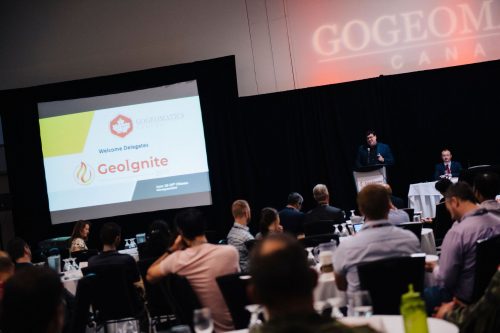University of New Brunswick Surveying: James Secord
Here, we will be speaking with Dr. James M. Secord. He is the Director of Undergraduate Studies in Geomatics in the Department of Geodesy and Geomatics Engineering at the University of New Brunswick [UNB].
Where did you receive your formal education?
Starting at the University of Windsor in Ontario, I completed the BScE, MScE, and PhD degrees at the University of New Brunswick because, at the time, there were few Canadian alternatives in my area of interest.
Can you explain to our readers the OLS and PEng acronyms?
Each province and territory has its own association of professional engineers and there is an association of professional land surveyors in each province and for Canada Lands [the Territories and federal lands]. Both professional engineering and land surveying are self-governing professions with their members having the exclusive right to practice engineering and land surveying, respectively. The “OLS” signifies being a member of the Association of Ontario Land Surveyors and the “PEng”, a member of the Association of Professional Engineers and Geoscientists of New Brunswick [specifically, as a geomatics engineer].
Academic preparation to become a professional engineer is administered by Engineers Canada though the Canadian Engineering Accreditation Board [CEAB]. The usual route to becoming a member is then to complete a baccalaureate degree accredited by the CEAB.
Academic preparation to becoming a land surveyor is administered by the Canadian Board of Examiners for Professional Surveyors [CBEPS] which has an accreditation committee. So, the preference would be to complete a CBEPS accredited baccalaureate degree.
Your geomatics degree is in the Faculty of Engineering. Do you believe that this entices prospective students? Do many engineering students switch to geomatics? Or vice versa?
Geomatics Engineering [now 4 years in duration] at UNB started as surveying engineering in 1960. It is well-established and has maintained its CEAB accreditation since that first started in 1972.
The Bachelor of Geomatics degree [3 years in duration] had its first graduate in May 2011. Its courses are a selection of the same courses required for geomatics engineering. Consequently, its admission requirements are normally the same as for engineering but each application is assessed on its own merit [such as maturity and post-secondary education already completed]. It is possible to transfer the courses between degrees and switching degree can be done. Geomatics Engineering could be completed after the Geomatics degree by doing the additional courses. Only about 2% of our undergraduates have ever transferred between degrees.
Both degrees, with the “Cadastral Surveying Option” [CSO], have been accredited by CBEPS. The CSO is a specific collection of technical electives, explained below, whereas either degree can be completed in a general sense with any of the technical electives and a minimum number of credit hours.
Most of our undergraduates come to the degrees with already some exposure to geomatics, either by post-secondary education, work experience, or acquaintance with someone in the discipline.
The attraction to geomatics is usually accompanied by a facility with mathematics and an appreciation of the outdoors although computer use can be a significant component.
What is it about each of the four technical electives that allow for the notation placed on a graduate’s transcript: ‘Completed Cadastral Surveying Option’?
The “Cadastral Surveying Option” is a collection of four specific technical electives. The completion of all four leads to the annotation on the transcript. It is the basis for describing a specialization of study recognized by CBEPS and is integral to its accreditation of either degree. Technical electives are courses taken by choice and usually follow completion of most of the core courses [those that every student is required to complete].
Urban Planning for Geomatics –
This course serves as an introduction to urban, regional, and rural planning and deals with the evolution of cities and how planning is a part of municipal administration and how it interacts with land use, transportation, services. It also places the design and development of subdivisions into context. Issues of sustainability and environmental responsibility are now also key components of this course.
Site Planning for Geomatics –
This course naturally follows the Urban Planning course and deals with the mechanism of land development and the design of subdivisions, from the point of view of land surveyors with an appreciation of how other professionals [planners, architects, civil engineers] are involved.
Survey Law –
After two courses in land administration and several courses in surveying, this course deals with the legal and technical aspects of performing property surveys [retracements, building locations for mortgage purposes, resolution of disputes] and with the role of the land surveyor in dispute resolution and as an expert witness in court.
Land Economy and Administration –
This is an extension of the core courses in land administration into the management and administrative aspects from economic and institutional perspectives: valuation, allocation, development, and conservation of resources. Issues of coastal zone management, environmental management, aboriginal tenure and land reform have become key components of this course.
Are there any other classes that you recommend for the prospective surveying students to complete? Are there any additional courses that you hope to make electives?
The Cadastral Surveying Option is one possible area of concentration beyond the core courses. Another area that is well defined is hydrographic surveying in which the Department offers a Certificate of Academic Proficiency in Hydrographic Surveying [CAPHS]. The CAPHS is a certificate, extra to the degree; however, it can be almost completed by doing the technical electives under the degree, except for an Operations practicum which is done in the summer months, after Encaenia. After completing the practicum, the Certificate is awarded after the degree.
There are several technical electives, as listed on the Department’s web site, <gge.unb.ca>, and they can be done in the general pursuit of either degree.
Do you see many of your geomatics students aiming to gain the additional surveying notation?
Over the past few years virtually all [more than 90%] of the graduating class has completed the Cadastral Surveying Option, even though it has more credit hours than the minimum required for either degree.
What additional jobs are there for those that complete their degree with the Cadastral Surveying Option?
Currently, most of the employment opportunities are in land surveying. The job market is very good since graduates usually have a choice of a least two offers unless they wish to stay in a particular geographic area.
What about the location of your university draws prospective students in?
As the only university in the Maritimes offering geomatics engineering, many of our students are from this region; however, for an assortment of reasons, largely the reputation of the program and the world-wide network of alumni/ae, students are from all across Canada as well as from abroad. So, it seems that location is not a major factor.
GoGeomatics Canada would like to thank you for your time and very informative interview. We hope to speak again soon.







